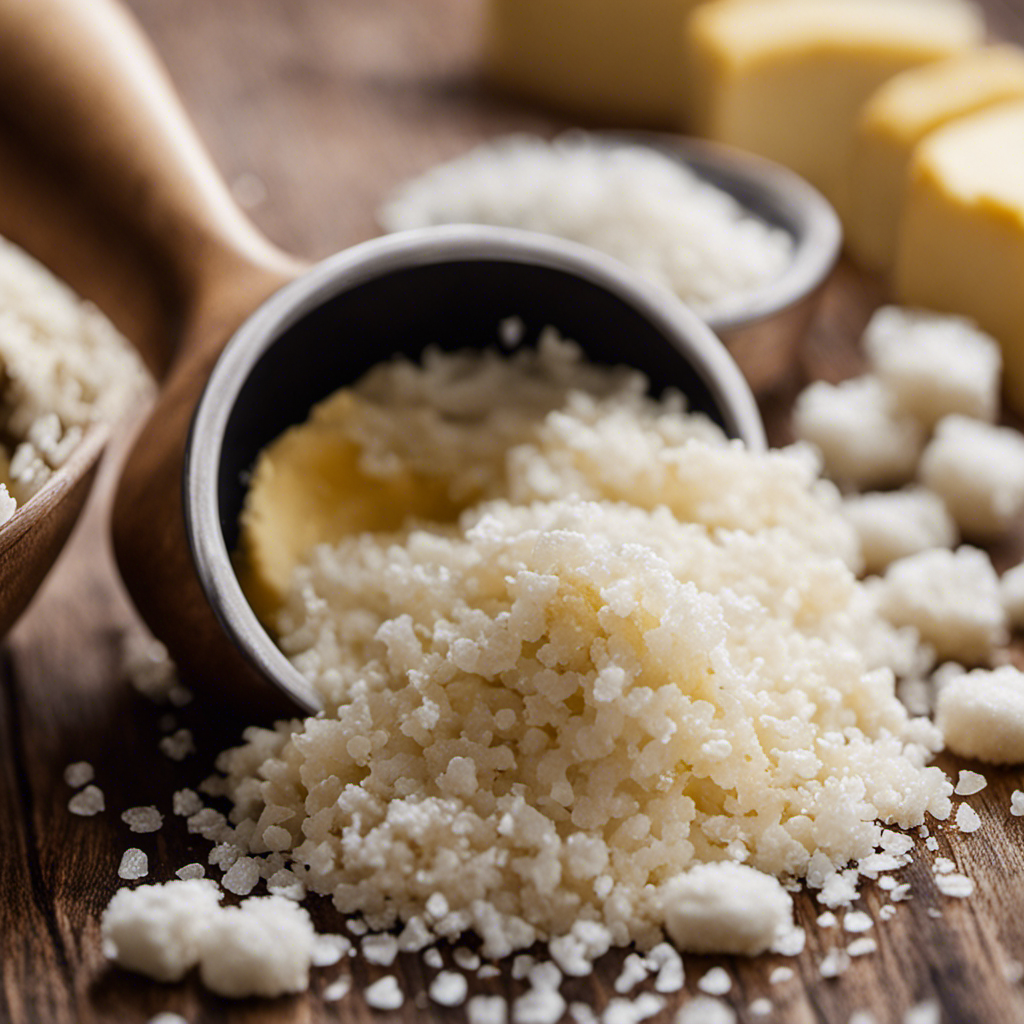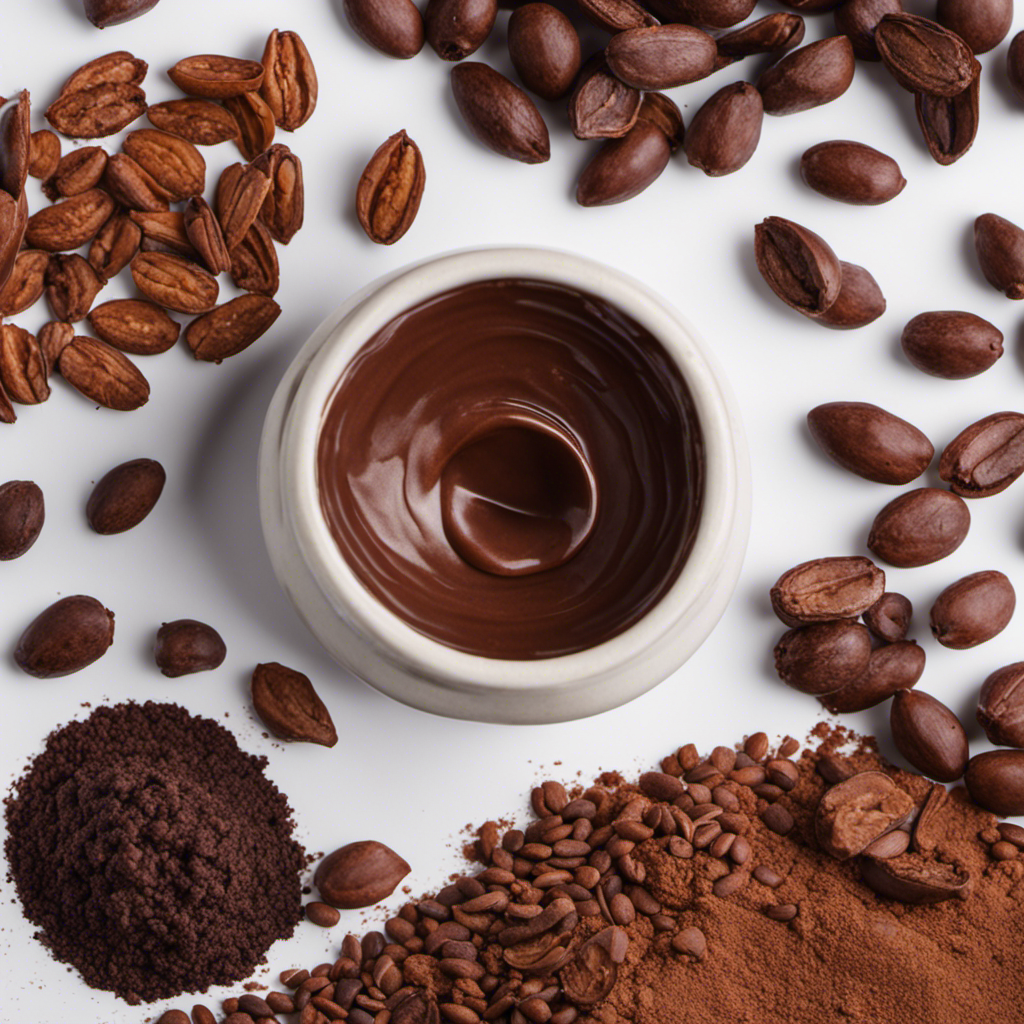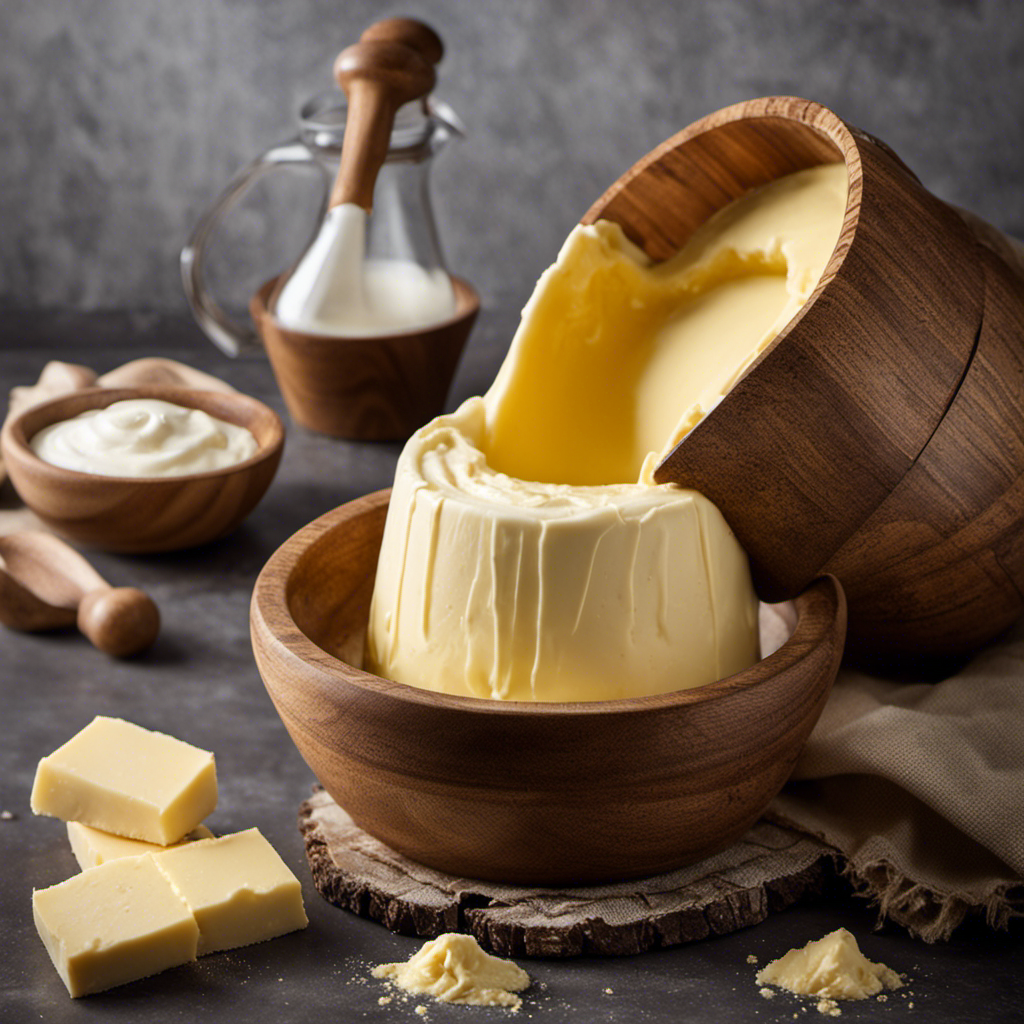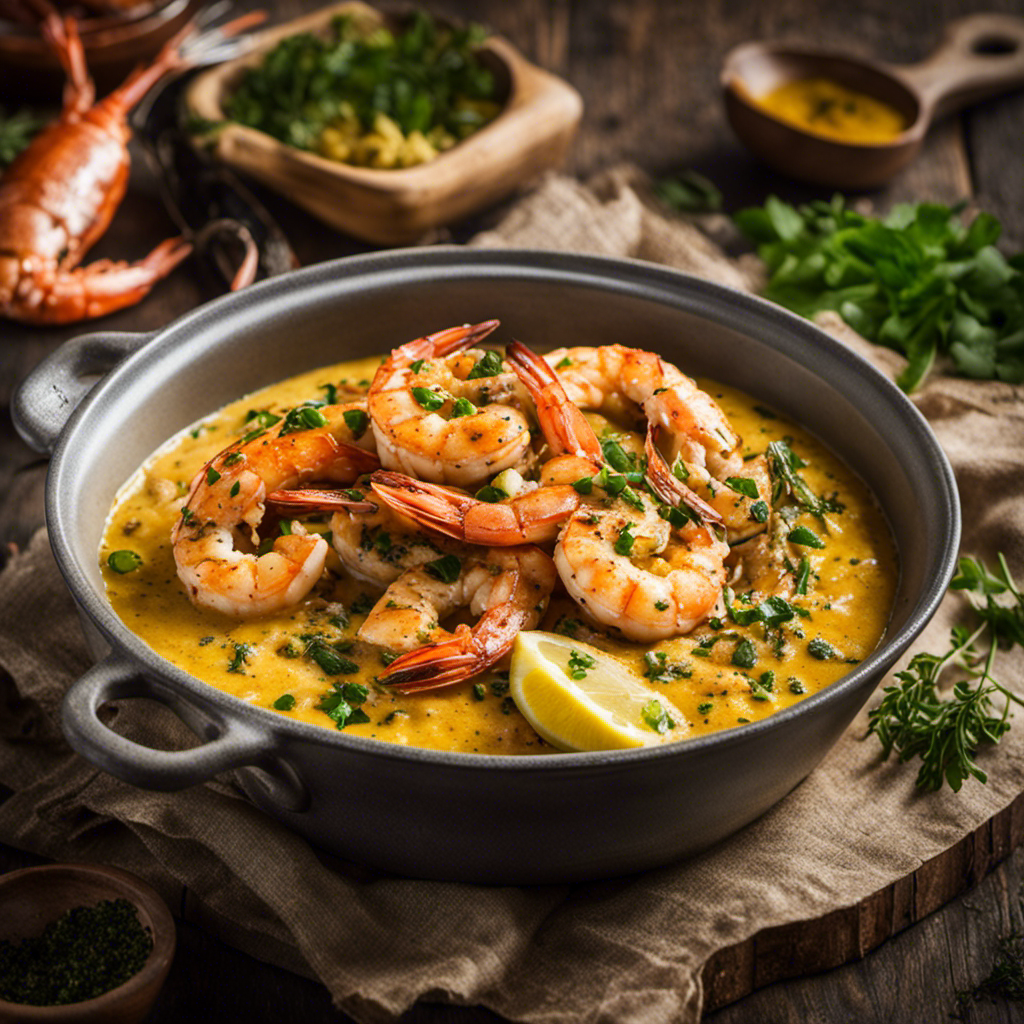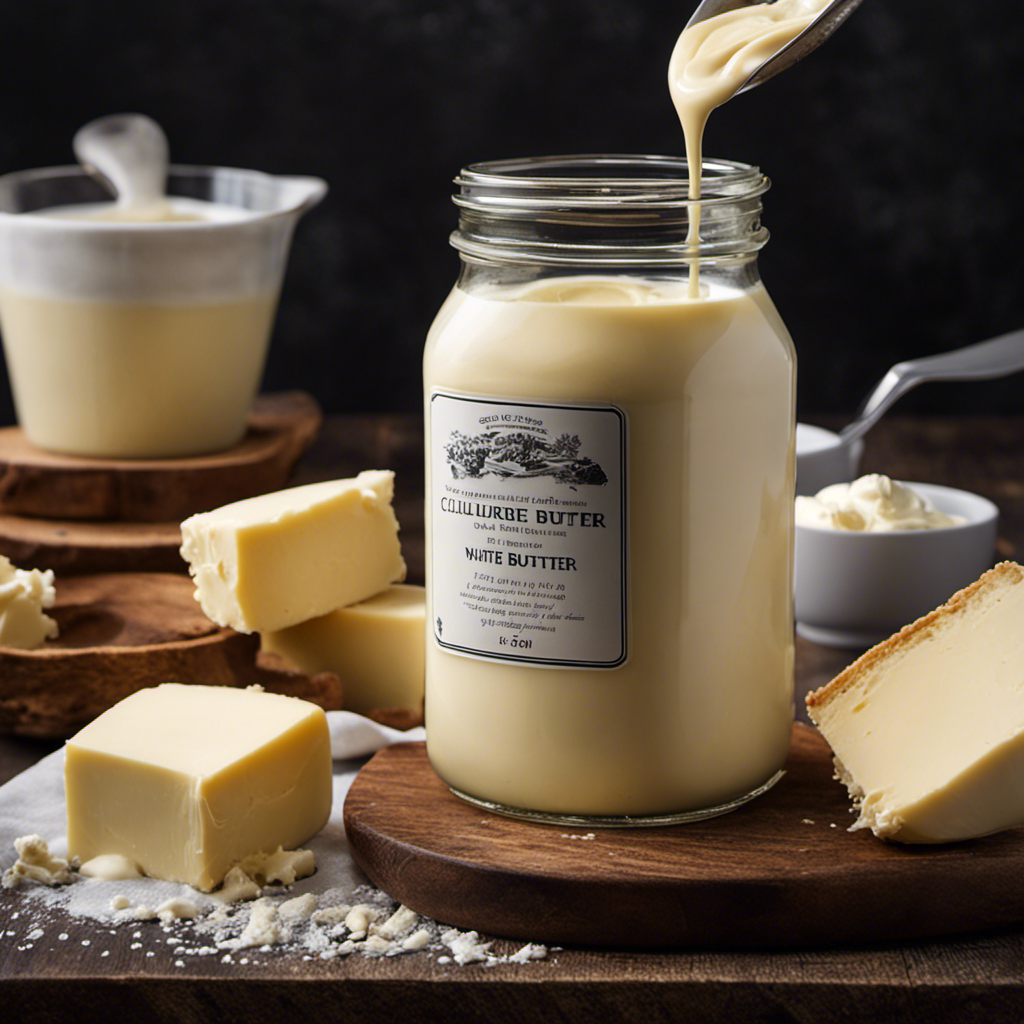Recipes & Culinary Uses
10 Steps to Cook Delicious Dried Butter Beans

As a lover of hearty, comforting meals, there’s nothing quite like a steaming bowl of butter beans. These little legumes are like tiny nuggets of gold, packed with protein and bursting with flavor.
In this article, I’ll share my tried-and-true method for cooking dried butter beans to perfection. From soaking and seasoning to boiling and serving, I’ll guide you every step of the way.
Get ready to indulge in a warm and satisfying dish that will have your taste buds dancing with delight.
Key Takeaways
- Soaking dried butter beans overnight hydrates and softens them, reducing cooking time and improving texture.
- Draining and rinsing soaked beans removes dirt and impurities, ensuring clean and flavorful beans.
- Boiling the butter beans with seasonings enhances their flavor, and testing for doneness ensures perfect texture.
- Stovetop cooking and pressure cooking are two methods to cook dried butter beans, both resulting in tender and creamy beans.
Soaking the Butter Beans
Once you’ve rinsed the dried butter beans, you’ll need to soak them overnight in a large bowl of water. Soaking the beans is an essential step in the cooking process, as it helps to soften them and reduce their cooking time.
The soaking time benefits the beans by hydrating them, making them easier to cook and improving their overall texture. It also helps to remove any dirt or debris that may be present on the beans.
While overnight soaking is the most common method, there are alternative soaking methods you can try. For a quick soak, you can bring the beans and water to a boil for a few minutes and then let them sit for an hour. Another option is to use a pressure cooker to speed up the soaking process.
Once the beans have been soaked, it’s time to move on to the next step of preparing the beans for cooking.
Preparing the Beans for Cooking
Soaking time for beans is an essential step in preparing them for cooking. It helps to soften the beans, making them easier to cook and digest. Additionally, soaking beans can reduce cooking time and help remove some of the gas-producing compounds.
After soaking, it’s important to drain and rinse the beans thoroughly to remove any dirt or impurities. This step ensures that you start with clean, fresh beans for your recipe.
Soaking Time for Beans
Before you start cooking the dried butter beans, make sure to soak them for at least 8 hours to ensure they cook evenly and become tender. Soaking the beans helps to rehydrate them and soften their texture, making them easier to cook and digest. It also helps to reduce the cooking time and improves the overall taste and texture of the beans.
During the soaking process, the beans absorb water and expand in size. This allows them to cook more evenly and thoroughly. It also helps to remove any dirt or debris that may be present on the beans.
To soak dried butter beans, simply place them in a large bowl and cover them with enough water. The table below shows the recommended soaking time for different quantities of beans:
| Quantity of Beans | Soaking Time |
|---|---|
| 1 cup | 8 hours |
| 2 cups | 12 hours |
| 3 cups | 24 hours |
Remember to discard the soaking water before cooking the beans to remove any impurities. Now that the beans are properly soaked, you are ready to move on to the next step in the cooking process.
Draining and Rinsing Beans
To properly prepare the beans, you should drain and rinse them after they have been soaked. When it comes to choosing dried butter beans, it is important to opt for high-quality ones. Look for beans that are plump and free from any signs of damage or discoloration. These beans will not only cook evenly but also have a better taste and texture.
When it’s time to drain and rinse the beans, follow these tips for best results. First, place the soaked beans in a colander and give them a thorough rinse under cold running water. This will help remove any impurities or debris that may have accumulated during the soaking process. Next, gently shake the colander to remove excess water. Finally, transfer the beans to a clean bowl or pot and they are ready to be cooked.
Properly draining and rinsing the beans ensures that they are clean and ready to absorb flavors, resulting in a delicious and satisfying dish. So don’t skip this important step!
Boiling the Butter Beans
When it comes to boiling butter beans, there are a few key factors to consider.
First, the cooking time can vary depending on the size and freshness of the beans, so it’s important to keep an eye on them as they simmer away.
Next, seasoning the boiling water with salt and other aromatics can enhance the flavor of the beans, making them even more delicious.
Lastly, testing for doneness is crucial to ensure that the beans are cooked to perfection, with a tender yet firm texture.
Cooking Time for Beans
The cooking time for butter beans can vary depending on their age and size. When it comes to cooking these delicious and nutritious legumes, it’s important to follow the right techniques to ensure they are perfectly cooked and tender. Here are some factors to consider and tips to help you determine the ideal cooking time for your butter beans:
-
Age of the beans: Freshly harvested butter beans will cook faster than older ones. So, if you’re using fresh beans, reduce the cooking time accordingly.
-
Size of the beans: Larger butter beans will take longer to cook than smaller ones. Keep this in mind when determining the cooking time.
-
Desired texture: The cooking time also depends on the texture you prefer. If you like your butter beans to be softer, increase the cooking time slightly.
Remember to soak your dried butter beans overnight before cooking to reduce the cooking time further.
Seasoning the Boiling Water
For best flavor, add salt and herbs to your boiling water when seasoning your butter beans. Adding spices to the boiling water is an important step in cooking dried butter beans. Not only does it enhance the taste of the beans, but it also infuses them with delicious flavors. The salt helps to bring out the natural flavors of the beans, while the herbs add a fragrant and aromatic touch. By seasoning the boiling water, you ensure that every bite of your butter beans is full of rich, savory goodness. The table below provides a guide for the recommended amounts of salt and herbs to add based on the quantity of beans being cooked.
| Quantity of Beans | Salt (teaspoons) | Herbs (tablespoons) |
|---|---|---|
| 1 cup | 1/2 | 1/2 |
| 2 cups | 1 | 1 |
| 3 cups | 1 1/2 | 1 1/2 |
| 4 cups | 2 | 2 |
| 5 cups | 2 1/2 | 2 1/2 |
Testing for Doneness
To test if they are cooked to perfection, simply take a butter bean and give it a gentle squeeze between your fingers. Here’s how to check for tenderness and adjust cooking time if needed:
-
Squeeze test: A properly cooked butter bean should be tender but not mushy. If it feels firm or hard, it needs more cooking time. If it easily smashes or turns to mush, it’s overcooked.
-
Taste test: Take a bean and taste it. It should be creamy and soft, with no raw or grainy texture. If it’s still too firm, continue cooking and check again after a few minutes.
-
Adjust cooking time: If the beans are not tender enough, add more water if needed and continue cooking. Keep checking for tenderness every few minutes until they reach the desired consistency.
Seasoning and Flavoring the Beans
Add your preferred seasonings and flavors to the beans, such as garlic, onion, and smoked paprika, to enhance their taste.
When it comes to cooking dried butter beans, adding herbs and spices can take them from plain to extraordinary. I love experimenting with different flavors to create a dish that is bursting with taste.
One of my favorite combinations is adding a generous amount of minced garlic, diced onion, and a sprinkle of smoked paprika. The garlic gives the beans a deliciously pungent flavor, while the onion adds a hint of sweetness. The smoked paprika adds a smoky and slightly spicy note that complements the creaminess of the beans perfectly.
Don’t be afraid to get creative with your seasonings and flavors – it’s all about finding what you enjoy the most!
Cooking the Beans to the Desired Texture
After seasoning and flavoring the butter beans, it’s time to cook them to the desired texture. Cooking dried butter beans requires certain techniques to ensure they become tender and creamy. Here’s how to do it:
-
Soaking: Start by soaking the beans overnight in a large bowl of water. This helps to soften them and reduce the cooking time.
-
Stovetop Cooking: Drain the soaked beans and place them in a large pot. Add enough water to cover the beans by a few inches. Bring the water to a boil, then reduce the heat and let the beans simmer for about 1 to 1 1/2 hours, or until they are tender.
-
Pressure Cooking: Alternatively, you can cook the beans in a pressure cooker for faster results. Follow the manufacturer’s instructions for cooking time and pressure release.
Once the butter beans are cooked to perfection, it’s time to serve and store them.
Serving and Storing the Butter Beans
Once the butter beans are cooked, they can be served hot or cold, and they should be stored in an airtight container in the refrigerator. Storing them properly is essential to maintain their freshness and flavor. To ensure their longevity, I recommend placing the cooked butter beans in a sealed container. This will prevent any moisture or odors from entering and affecting their taste. Additionally, it is important to store them in the refrigerator to keep them cool and prevent any bacterial growth.
When it comes to serving the butter beans, there are various options to explore. For a simple and delicious side dish, you can toss them with some olive oil, lemon juice, and fresh herbs. They can also be added to salads, soups, or stews for an extra boost of protein and texture. Another alternative serving suggestion is to mash them up and use them as a spread on toast or crackers. The possibilities are endless, so don’t be afraid to get creative with your butter bean dishes.
Frequently Asked Questions
Can I Cook Dried Butter Beans Without Soaking Them First?
Sure, you can cook dried butter beans without soaking them first. However, it will increase the cooking time significantly. Alternatively, you can try using a pressure cooker or slow cooker for a quicker cooking method.
How Long Should I Soak Dried Butter Beans Before Cooking?
Before cooking dried butter beans, I soak them overnight for at least 8 hours. This helps to soften them and reduce cooking time. Alternatively, you can try quick soaking by boiling them for a few minutes before letting them sit for an hour.
Can I Use a Pressure Cooker to Cook Butter Beans?
Using a pressure cooker to cook butter beans has several benefits. It reduces cooking time, preserves nutrients, and results in tender beans. However, if you don’t have a pressure cooker, there are alternative cooking methods available.
What Are Some Common Seasonings and Flavors Used for Butter Beans?
When it comes to seasoning options for butter beans, there are plenty of delicious choices. From classic herbs like thyme and rosemary to bold flavors like garlic and smoked paprika, the possibilities for flavor pairing are endless.
How Long Can I Store Cooked Butter Beans in the Refrigerator?
I usually store cooked butter beans in an airtight container in the refrigerator. They can last up to five days. Alternatively, you can freeze them for longer storage. Just thaw and reheat when needed.
Conclusion
Well, there you have it, folks, the ultimate guide to cooking dried butter beans! Who knew that such a simple task could be so rewarding?
Soaking, preparing, boiling, seasoning, and cooking these little legumes may seem like a hassle, but trust me, it’s worth it.
And hey, if you’re feeling extra adventurous, why not try serving them with a side of disappointment? Just kidding, they’re actually quite delicious.
So go ahead, give it a try, and enjoy your perfectly cooked butter beans!
Diana’s meticulous nature and editorial prowess set the gold standard for our content. With over a decade in the culinary and publishing industries, her guidance ensures that every article perfectly blends information and entertainment. A culinary experimenter, Diana loves whipping up new butter-based concoctions in her kitchen.
Recipes & Culinary Uses
Converting 6 Tablespoons of Butter Equals How Many Cups
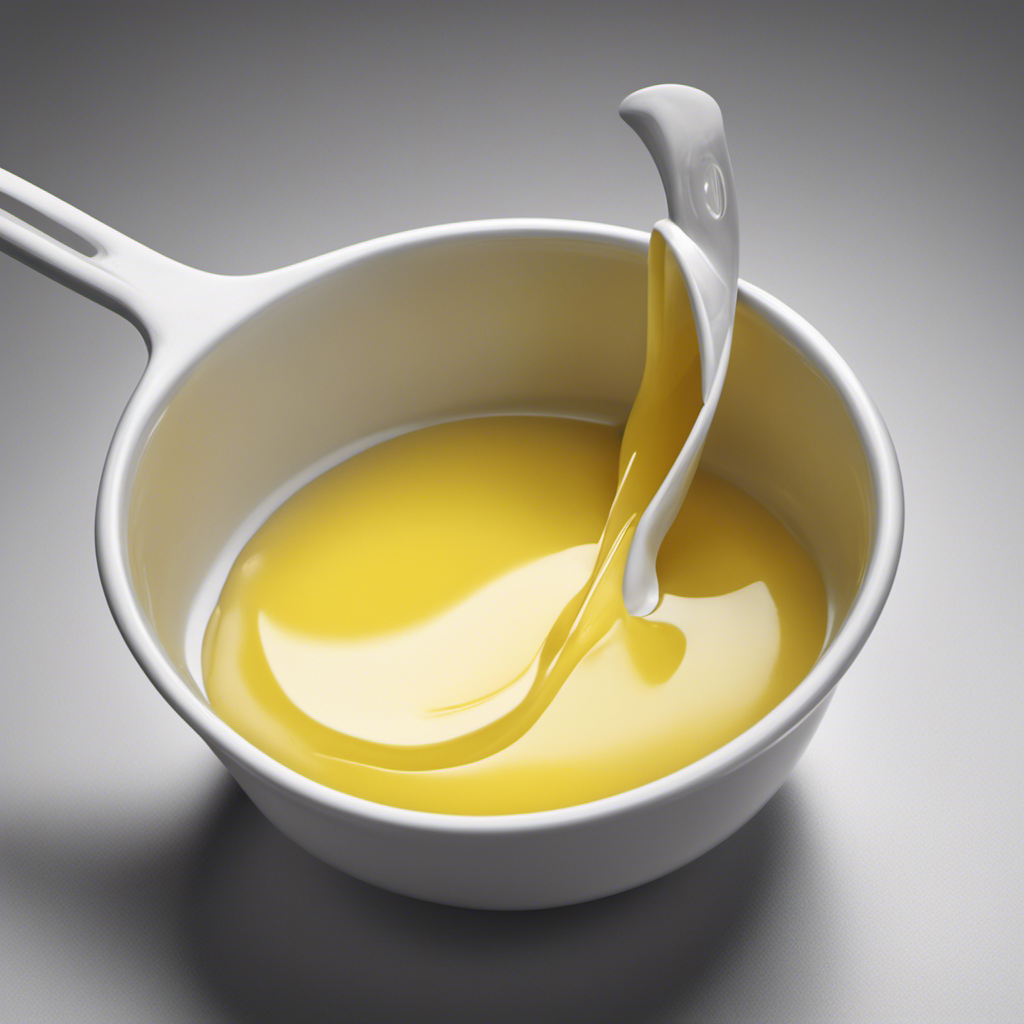
I have always been very particular about accurate measurements when cooking.
So, when a recipe called for 6 tablespoons of butter, I wondered how many cups that would be.
After some research and calculations, I discovered the conversion ratio and the answer.
In this article, I’ll share with you the exact measurement and some tips for accurately measuring butter in cups.
So, let’s dive in and simplify your cooking process!
Key Takeaways
- 6 tablespoons of butter is equal to 0.375 cups
- Knowing the conversion ratios between tablespoons and cups ensures precise measurements when using butter in recipes
- Using a kitchen scale for accurate measurement of ingredients is recommended
- Experimenting with alternative ingredients like applesauce, mashed bananas, avocado, or coconut oil can be done when substituting butter
Understanding the Conversion Ratio
I understand how the conversion ratio works – 1 cup of butter is equal to 16 tablespoons. When measuring butter in grams, it’s important to know how to convert it from sticks to cups accurately.
One stick of butter weighs approximately 113 grams or 4 ounces. To convert this to cups, you need to know that there are 8 tablespoons in a stick of butter. So, if you’ve 1 stick of butter, you’ve 8 tablespoons, which is equivalent to half a cup.
If you’ve 2 sticks of butter, you’ve 16 tablespoons, which is equal to 1 cup. It’s essential to know these conversions to ensure precise measurements when cooking or baking with butter.
Calculating Butter in Cups
To convert tablespoons of butter to cups, I’d simply divide the amount by 16. When it comes to converting butter measurements in metric units, it’s important to remember that 1 cup of butter is equal to 16 tablespoons. So, if you’ve 8 tablespoons of butter, you’d divide 8 by 16 to get 0.5 cups.
This conversion is essential when following recipes that call for butter in cups rather than tablespoons. Additionally, if you prefer to use butter substitutes in your recipes, such as margarine or oil, it’s crucial to know the conversion ratio between these substitutes and butter. Keep in mind that different substitutes have different ratios, so it’s always best to consult a reliable conversion chart or follow the instructions provided on the substitute’s packaging.
Understanding these conversions will ensure accurate measurements in your recipes and help you achieve the desired results. Now, let’s move on to some tips for accurate measurement.
Tips for Accurate Measurement
Using a kitchen scale is a precise way to measure ingredients for accurate recipe results. It ensures that you’re using the exact amount of each ingredient, which is crucial for achieving the desired texture and flavor in your baked goods.
When it comes to measuring butter, many people make common mistakes that can affect the outcome of their recipes. One common mistake is using a measuring cup to measure solid butter, resulting in inaccurate measurements. Instead, it’s best to use a kitchen scale to measure butter in grams or ounces.
Another mistake is using cold butter when the recipe calls for softened butter. This can affect the texture of your baked goods.
If you don’t have butter on hand or prefer a healthier alternative, there are several options you can use in baking. Some alternatives for butter include applesauce, mashed bananas, avocado, or coconut oil. These substitutions may slightly alter the taste and texture of your baked goods, so it’s important to experiment and adjust the recipe as needed.
Converting Recipes With Butter Measurements
When converting recipes, it’s important to accurately measure the amount of butter needed for the desired outcome. In baking, butter adds flavor, moisture, and richness to our favorite treats. However, there may be times when we need to use butter substitutes for dietary reasons or simply because we ran out of butter. In such cases, it’s crucial to know the proper conversions to ensure our recipes turn out just right.
To measure butter without a scale, you can use the tablespoon method. One stick of butter is equal to 8 tablespoons or 1/2 cup. So, if your recipe calls for 1 cup of butter, you’ll need 2 sticks or 16 tablespoons.
Now that we’ve covered butter measurements, let’s move on to common culinary conversions.
Common Culinary Conversions
I often find it helpful to have a list of common culinary conversions on hand for quick reference in the kitchen. When it comes to baking recipes that call for butter, it’s important to know how to convert butter measurements accurately.
Sometimes, you may need to substitute butter with a different ingredient, like oil or margarine. To convert tablespoons of butter to cups, remember that 1 cup of butter is equal to 16 tablespoons. So, if a recipe calls for 8 tablespoons of butter, you’d need half a cup.
It’s crucial to get these conversions right to ensure the perfect texture and flavor in your baked goods. Having a list of butter substitutes and knowing how to convert butter measurements will make your time in the kitchen much easier.
Frequently Asked Questions
Can I Use Margarine Instead of Butter in Recipes That Call for Cups of Butter?
Sure, you can use margarine instead of butter in recipes that call for cups of butter.
However, keep in mind that margarine and butter have different properties. Butter contains more fat and has a rich flavor, while margarine is made from vegetable oils and has a milder taste.
How Do I Convert Tablespoons of Butter to Grams?
When it comes to converting tablespoons of butter to grams, I’ve got you covered. Let’s skip the context and dive right into the current question.
Converting tablespoons to grams can be a bit tricky, but fear not! There are handy conversion charts available that provide precise measurements for butter. These charts will make your life so much easier when it comes to baking and cooking. Trust me, they’re a game-changer.
What Is the Equivalent Measurement for 6 Tablespoons of Butter in Ounces?
To find the equivalent measurement for 6 tablespoons of butter in ounces, you’ll need to convert it. I can help you with that!
Converting tablespoons to ounces is pretty straightforward. One tablespoon is equal to 0.5 ounces.
So, if you’ve 6 tablespoons of butter, it would be equivalent to 3 ounces.
Are There Any Substitutions for Butter if I Want to Make a Dairy-Free Recipe?
When it comes to making a dairy-free recipe, there are several options you can use as substitutes for butter.
One popular choice is dairy-free butter substitutes, which are made from plant-based oils. These substitutes can be used in equal amounts as butter in most recipes.
Additionally, there are other tips for baking without butter, such as using coconut oil or applesauce as alternatives.
Experimenting with different substitutes can help you find the perfect dairy-free option for your recipe.
How Can I Accurately Measure Butter Without Using Tablespoons or Cups?
When it comes to accurately measuring butter without using tablespoons or cups, there are a few alternative methods. One approach is to use the markings on the butter wrapper itself. Each stick of butter usually has measurements marked in tablespoons and cups.
Another option is to use a kitchen scale to weigh the butter. This method allows for precise measurements and eliminates the need for volume-based measurements.
Conclusion
In conclusion, understanding the conversion ratio between tablespoons and cups is essential for accurate measurement in cooking.
By knowing that 6 tablespoons of butter is equal to 1/3 cup, you can easily adapt recipes and achieve the desired results.
Remember to use proper measuring tools and techniques for precise measurements.
With this knowledge, you can confidently convert recipes and create delicious dishes without any confusion.
Diana’s meticulous nature and editorial prowess set the gold standard for our content. With over a decade in the culinary and publishing industries, her guidance ensures that every article perfectly blends information and entertainment. A culinary experimenter, Diana loves whipping up new butter-based concoctions in her kitchen.
Recipes & Culinary Uses
Measuring Butter: How Many Cups in One Cube?
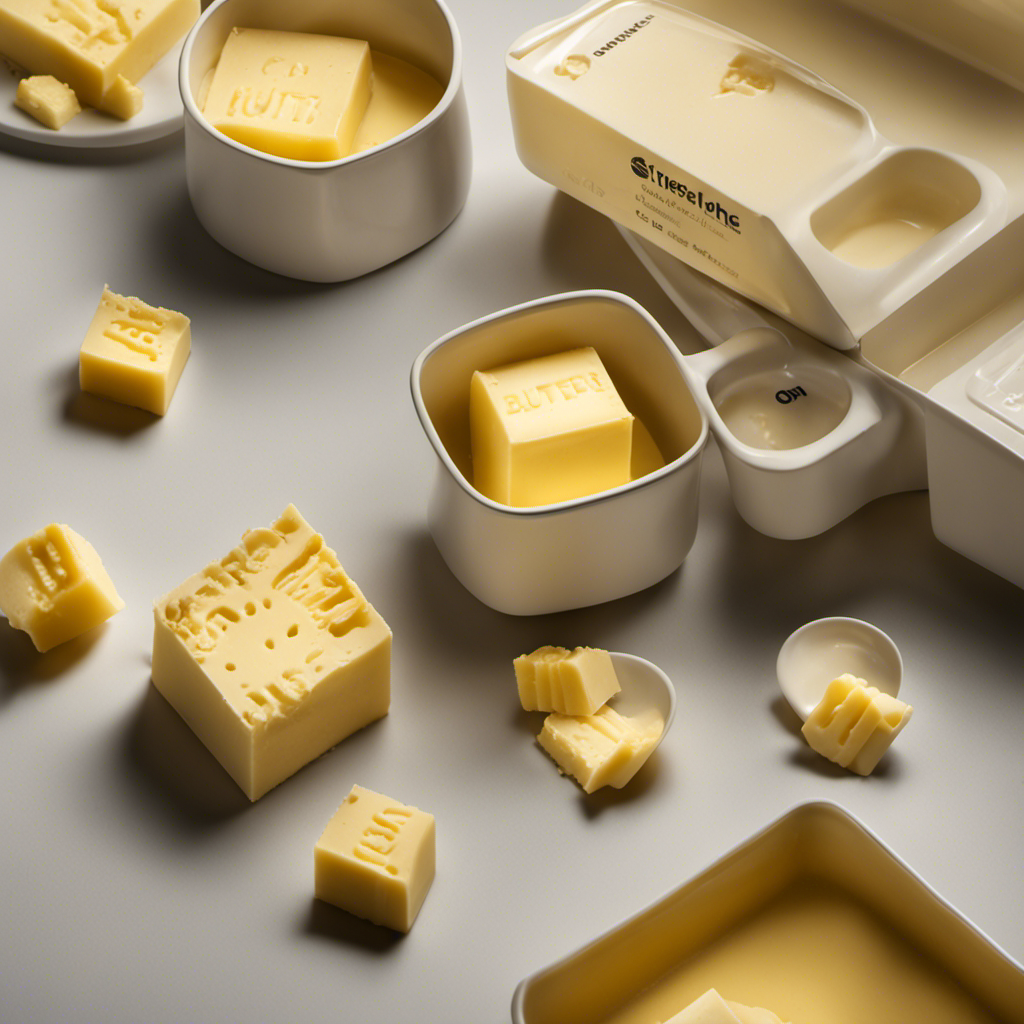
Yes, I have experienced being in the middle of a recipe and discovering that I lack the proper measurements.
One common dilemma is figuring out how many cups are in one cube of butter. It can be confusing, but fear not! In this article, I will demystify the measurement conundrum and provide you with a handy conversion chart to make your baking adventures a breeze.
So let’s dive in and master the art of butter measurements together!
Key Takeaways
- 1 cube of butter is equivalent to 1/2 cup of butter.
- The conversion ratio for cubes to cups is 1 cup for every cube of butter.
- When a recipe calls for 2 cubes of butter, you will need 2 cups of butter.
- It’s important to check the packaging or do research for butter substitutes, as not all substitutes have the same conversion ratio.
The Measurement Conundrum: Cups Vs. Cubes
Understanding butter measurements can be a bit confusing, especially when it comes to converting butter ratios. To clear up this conundrum, let’s dive into the world of butter measurements.
When a recipe calls for a ‘cube’ of butter, it typically refers to a standard stick of butter, which is 1/2 cup or 8 tablespoons. However, it’s important to note that not all butter packages are labeled in sticks. Some may come in larger blocks or tubs. In these cases, it’s best to refer to the packaging for the exact cup measurements.
To convert butter ratios, remember that 1 stick of butter is equivalent to 1/2 cup or 8 tablespoons. This knowledge will help you navigate through recipes with ease and ensure accurate measurements.
Understanding Butter Measurements: Cups Explained
To understand how much butter to use, you’ll want to know how cups are used to measure it. Here are some tips and tricks for accurate butter measurements:
-
Butter measurement equivalents: understanding different units of measuring butter
- 1 stick of butter = 1/2 cup = 8 tablespoons = 4 ounces
- 1 cup of butter = 2 sticks = 16 tablespoons = 8 ounces
-
Simplifying cooking measurements: tips and tricks for accurate butter measurements
- If a recipe calls for melted butter, measure it in its solid form and then melt it.
- To measure butter without a scale, use the markings on the wrapper or a tablespoon.
- For easy portioning, cut butter into tablespoons or use a butter dish with markings.
Understanding butter measurements in cups can simplify your cooking experience. By knowing the equivalents and using these tips, you can ensure accurate measurements and perfect results in your recipes.
Converting Butter Measurements: From Cubes to Cups
When it comes to using butter in recipes, understanding the conversion ratio is crucial. This is because different recipes may call for butter to be measured in different ways, such as cups or grams.
Knowing how to convert between these measurements ensures accurate and consistent results in your cooking and baking. Additionally, having a good grasp of common recipes that use butter can help expand your culinary repertoire and allow you to explore different flavors and techniques.
Conversion Ratio for Butter
The conversion ratio for butter is 1 cup for every cube. When it comes to measuring butter, it can be helpful to know the equivalent measurements for different forms of butter. Here are three key points to keep in mind:
-
Cubes to cups: To convert cubes of butter to cups, simply use the conversion ratio of 1 cup for every cube. This means that if a recipe calls for 2 cubes of butter, you would need 2 cups of butter.
-
Butter substitutes: If you’re looking for a butter substitute, keep in mind that not all substitutes will have the same conversion ratio. Some may have a higher or lower fat content, which can affect the measurement. It’s always a good idea to check the packaging or do some research to ensure you’re using the right amount.
-
Accuracy matters: When measuring butter, accuracy is key. Using the correct amount can greatly affect the outcome of your recipe, so be sure to follow the conversion ratio closely.
Now that you know the conversion ratio for butter, let’s explore some common recipes that use this versatile ingredient.
Common Recipes Using Butter
Now that we have covered the conversion ratio, let’s dive into some popular recipes that incorporate butter.
Butter is a versatile ingredient that adds richness and flavor to many dishes. When it comes to measuring butter, it can sometimes be confusing because recipes may call for different units of measurement. To simplify cooking measurements, it’s helpful to know the butter measurement equivalents.
One stick of butter is equal to 1/2 cup or 8 tablespoons. Keep in mind that butter is often sold in 1-pound packages, which contains 4 sticks or 2 cups of butter. By understanding these measurements, you can easily adjust the amount of butter needed in your recipes.
Now, let’s move on to a handy conversion chart that will help you convert cubes of butter to cups.
Handy Conversion Chart: Cubes to Cups
I find it helpful to have a handy conversion chart for butter measurements. Especially when a recipe calls for a specific number of cubes, but I only have a measuring cup. This chart simplifies cooking measurements by providing the equivalent measurement in cups for a given number of butter cubes.
It’s a time-saving tool that ensures accuracy in recipes and makes cooking a breeze.
Butter Measurement Equivalents
To measure how many cups are in a cube of butter, you’ll need to know the butter measurement equivalents. Here are three important equivalents to keep in mind when measuring butter:
-
1 cube of butter is equal to 1/2 cup. This is a common measurement used in many recipes.
-
1 stick of butter is equal to 1/2 cup or 8 tablespoons. Sticks of butter are often marked with tablespoon measurements, making it easy to measure out the desired amount.
-
1 pound of butter is equal to 4 sticks or 2 cups. This is a larger measurement often used in bulk baking or cooking.
Simplifying Cooking Measurements
Remember, it’s helpful to know the equivalents for common cooking measurements so that you can easily follow recipes and achieve accurate results.
One aspect of simplifying cooking measurements is converting butter measurements. When a recipe calls for a ‘cube of butter,’ it can be confusing to determine how much that actually is in cups. To simplify this, it’s important to know that a standard cube of butter is 1/2 cup.
This means that if a recipe calls for 2 cubes of butter, you would need 1 cup. Similarly, if a recipe calls for 4 cubes of butter, you would need 2 cups.
Baking Basics: Butter Measurements Simplified
Calculating how many cups are in a cube of butter is a helpful baking hack you should know. As a baker, understanding butter measurement conversions can make a big difference in the success of your recipes. Here are three benefits of using butter in baking:
-
Flavor: Butter adds richness and depth to baked goods, enhancing their overall taste. Its natural flavor complements a variety of ingredients, making it a versatile choice in the kitchen.
-
Texture: Butter contributes to the tender and moist texture of baked treats. It helps create a delicate crumb and adds a lusciousness that other fats may not achieve.
-
Browning: Butter contains milk solids, which aid in browning during baking. This caramelization process adds a beautiful golden color to pastries and imparts a delightful aroma.
Knowing how to convert a cube of butter into cups allows you to easily adjust recipes and achieve consistent results. So, next time you’re baking, keep this handy baking hack in mind!
The Perfect Ratio: How Many Cups in a Cube of Butter
In my previous subtopic, I discussed the basics of butter measurements and how to simplify them for baking.
Now, let’s dive deeper into the perfect ratio of a cube of butter to cups.
Many recipes call for a specific amount of butter in cups, but it can be confusing when you have a whole stick or cube of butter.
So, to simplify cooking measurements, it’s important to know that one cube of butter is equivalent to 1/2 cup or 8 tablespoons.
This knowledge is essential when following recipes accurately and maintaining the right balance of ingredients.
Mastering Butter Measurements: Cups Vs. Cubes Demystified
To simplify your cooking and baking measurements, it’s important to understand the equivalent ratios between cups and cubes of butter. Here are some butter measurement techniques and common butter substitutes:
-
1 cube of butter is equal to 1/2 cup. This is a standard conversion that can come in handy when a recipe calls for a specific amount of butter in cups.
-
If you need to substitute butter with a healthier option, try using avocado. 1/2 cup of mashed avocado can replace 1 cup of butter in most recipes.
-
Another popular butter substitute is coconut oil. 1 cup of coconut oil can be used instead of 1 cup of butter, but keep in mind that coconut oil has a distinct flavor that may alter the taste of your dish.
Understanding these butter measurement techniques and common substitutes will help you navigate your recipes with ease and achieve delicious results.
Frequently Asked Questions
Can I Use a Different Type of Butter Measurement for Baking Instead of Using Cups or Cubes?
I can use different types of butter measurements for baking and convert them without using cups or cubes. There are alternative measurements like grams or ounces that can be used instead.
How Do I Convert Butter Measurements From Grams or Ounces to Cups or Cubes?
To convert butter measurements from grams or ounces to cups or cubes, you can refer to a butter conversion chart. It provides precise information on how much butter is equivalent to a certain number of cups or cubes, making cooking easier.
Are There Any Substitutes for Butter in Recipes That Require Measuring in Cups or Cubes?
When it comes to butter substitutes, there are options for people with lactose intolerance and those following a vegan diet. These alternatives can be measured in cups or cubes, providing a suitable replacement in recipes.
What Is the Difference Between Using Melted Butter Versus Solid Butter When Measuring in Cups or Cubes?
When measuring butter in cups or cubes, the difference between using melted butter and solid butter in recipes can affect the texture and consistency of the final product. There are pros and cons to both methods in baking.
Can I Use Margarine or Oil Instead of Butter in Recipes That Call for Measuring in Cups or Cubes?
Using margarine instead of butter can be a suitable substitute in recipes that call for measuring in cups or cubes. However, using oil instead of butter may offer certain benefits like lower saturated fat content.
Conclusion
In conclusion, understanding the conversion from cubes to cups when measuring butter is vital for any aspiring baker.
Just like a master conductor orchestrating a symphony, this knowledge allows you to create culinary masterpieces with precision and finesse.
So, next time you find yourself in the kitchen, remember the handy conversion chart and embrace the perfect ratio of butter.
With this information, you’ll have the power to transform ordinary recipes into extraordinary delights.
Happy baking!
Diana’s meticulous nature and editorial prowess set the gold standard for our content. With over a decade in the culinary and publishing industries, her guidance ensures that every article perfectly blends information and entertainment. A culinary experimenter, Diana loves whipping up new butter-based concoctions in her kitchen.
Recipes & Culinary Uses
Stick of Butter Equals How Many Tablespoons: A Simple Guide
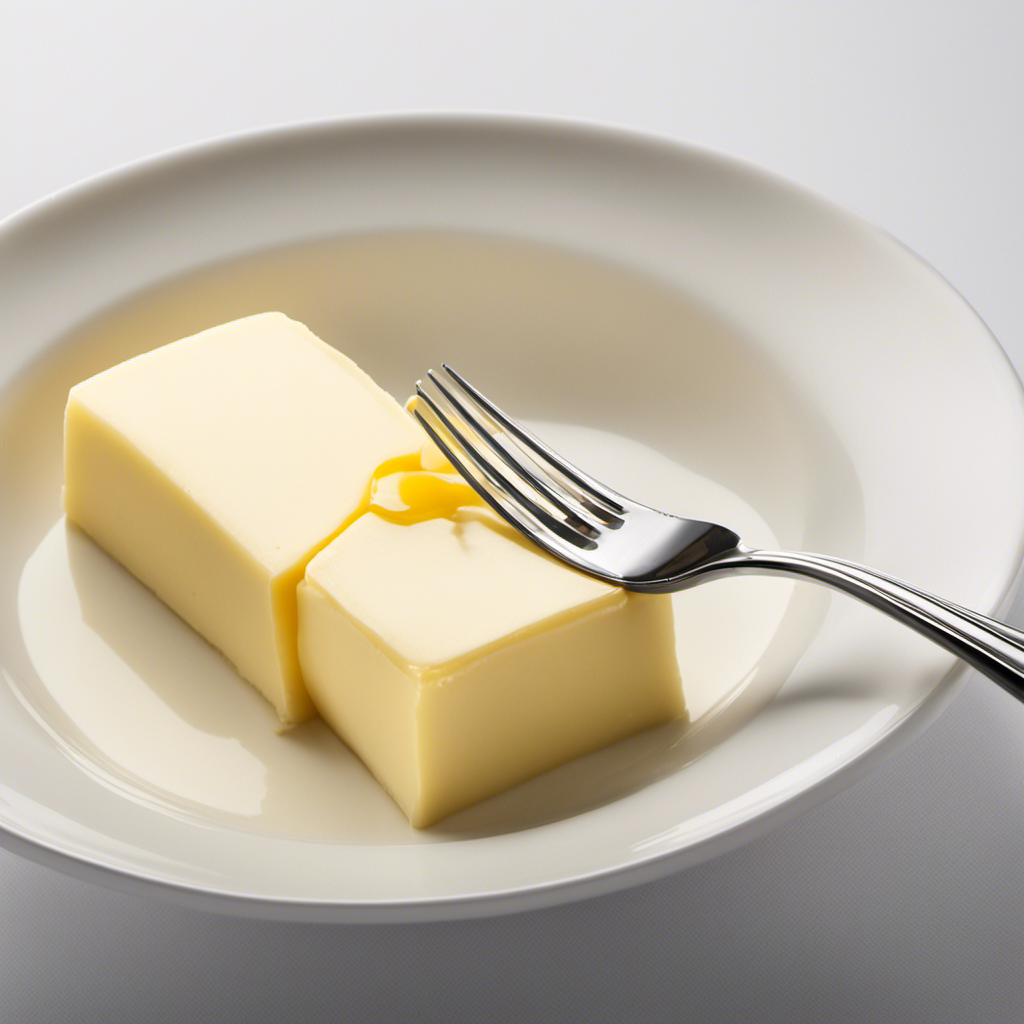
I recall the first time I tried a recipe that required ‘1 stick of butter.’ Standing in my kitchen, holding the stick, I suddenly realized I had no clue how many tablespoons that equated to. It was a moment of perplexity and annoyance.
If only I had known then what I know now: 1 stick of butter equals 8 tablespoons. In this article, I will provide you with a handy butter conversion chart, tips for measuring butter accurately, and insights into common recipes and baking with butter.
Say goodbye to kitchen confusion and let’s dive into the world of butter measurements!
Key Takeaways
- A stick of butter is equal to 8 tablespoons.
- Converting between butter and tablespoons is essential for accurate measurements.
- Calculating tablespoons from butter can be done by dividing the amount of butter by 8.
- The standard ratio is 1 stick of butter equals 8 tablespoons.
The Basics: Understanding Butter Measurements
Understanding butter measurements can be confusing, but it’s important to know that a stick of butter is equal to 8 tablespoons.
When it comes to baking, recipes often call for butter in different measurements, and it’s helpful to know how to convert them accurately.
For example, if a recipe calls for 1/2 cup of butter, you can easily convert it to tablespoons by multiplying 1/2 by 8, which equals 4 tablespoons.
Similarly, if a recipe requires 1/4 cup of butter, you can convert it to 2 tablespoons.
It’s also important to note that butter can be measured in different forms, such as sticks, cups, or grams.
Understanding these butter measurement equivalents will allow you to confidently convert butter for baking and ensure your recipes turn out just right.
Butter Conversion Chart: Sticks to Tablespoons
To convert sticks of butter to tablespoons, it’s helpful to know that there are 8 tablespoons in one stick. Understanding butter tablespoon equivalents is essential for accurate measurements in recipes. Here is a handy butter conversion chart that shows the number of tablespoons in different quantities of butter:
| Sticks of Butter | Tablespoons |
|---|---|
| 1 | 8 |
| 2 | 16 |
| 3 | 24 |
As you can see, each stick of butter is equivalent to 8 tablespoons. So, if a recipe calls for 2 sticks of butter, you will need 16 tablespoons. This conversion chart simplifies the process of converting butter measurements, ensuring that you add the right amount to your recipes. Now that we have established the butter tablespoon equivalents, let’s move on to how to measure butter in tablespoons.
How to Measure Butter in Tablespoons
When it comes to measuring butter in tablespoons, it’s important to understand the conversion ratios and how to calculate the number of tablespoons from a given amount of butter.
The butter to tablespoon ratio can vary depending on whether you’re using sticks of butter or cups of butter.
To ensure accurate measurements in your recipes, knowing how to convert between butter and tablespoons is essential.
Butter Tablespoon Conversion
The stick of butter equals how many tablespoons?
When it comes to butter measurement equivalents, it’s important to know the conversions for different units. In the United States, a standard stick of butter is equivalent to 8 tablespoons or 1/2 cup. This measurement is widely used in recipes and makes it easier to portion out the butter.
However, if you’re using a different measuring system, such as metric, the conversion may vary. In the metric system, 1 stick of butter is approximately 113 grams or 4 ounces. It’s always a good idea to double-check the conversions based on your specific measuring system to ensure accuracy in your recipes.
Now that we know how many tablespoons are in a stick of butter, let’s move on to calculating tablespoons from butter.
Calculating Tablespoons From Butter
Calculating tablespoons from butter can be done by dividing the amount of butter by 8.
When it comes to measuring butter accurately, it’s important to have the right conversion. Butter is often sold in sticks, which are typically labeled with tablespoon measurements. However, if you have butter in a different form, such as a tub or a block, you may need to determine how many tablespoons are in a given amount.
To convert the measurements, simply divide the amount of butter by 8. For example, if you have 1 cup of butter, you would divide it by 8 to get 1/2 cup, which is equivalent to 8 tablespoons.
This simple calculation allows you to accurately measure butter in tablespoons, ensuring precise results in your recipes. Understanding this butter to tablespoon ratio is essential for successful cooking and baking.
Butter to Tablespoon Ratio
Converting butter into tablespoons is a simple process that can be achieved by dividing the amount of butter by 8. This conversion is commonly used in recipes, where specific measurements are necessary for accurate results.
Here are some key points to keep in mind when converting butter measurements:
- The standard ratio is 1 stick of butter equals 8 tablespoons.
- If you have a different amount of butter, divide it by 8 to determine the number of tablespoons.
- For example, if you have 2 sticks of butter, you would have 16 tablespoons.
- It’s important to note that butter can be measured in different ways across countries, so be sure to check the specific conversion for your region.
Quick Tip: Converting Sticks of Butter to Tablespoons
When it comes to measuring butter, understanding the conversions can make a big difference in your cooking.
One common question is how many tablespoons are in a stick of butter.
In this discussion, we will explore butter measurement conversions, the number of tablespoons in a stick of butter, and provide some quick kitchen conversions to help you in your culinary endeavors.
Butter Measurement Conversions
To figure out how many tablespoons are in a stick of butter, you can simply divide it by 8. This is a common measurement conversion used in cooking and baking. Here are some other butter measurement equivalents to keep in mind:
- 1 stick of butter = 8 tablespoons
- 1/2 stick of butter = 4 tablespoons
- 1/4 stick of butter = 2 tablespoons
- 1/8 stick of butter = 1 tablespoon
Knowing these conversions can be helpful when following recipes or adjusting measurements. Understanding how much butter is needed can ensure the right texture and flavor in your dishes.
Now that we know how many tablespoons are in a stick of butter, let’s explore more about the versatility of this ingredient and its importance in various recipes.
Tablespoons per Stick
If you’re unsure of the measurement, 8 tablespoons is the equivalent of one stick of butter. Converting butter to tablespoons can be helpful when following a recipe that calls for a specific amount of butter. Here is a table showing the butter measurement equivalents in tablespoons:
| Sticks of Butter | Tablespoons |
|---|---|
| 1 | 8 |
| 2 | 16 |
| 3 | 24 |
Quick Kitchen Conversions
By using a conversion chart, you can easily determine the equivalent measurements for common kitchen ingredients.
Here are some quick kitchen tips for converting grams to tablespoons:
-
Butter: 1 tablespoon is equivalent to 14 grams. So, if a recipe calls for 100 grams of butter, you would need approximately 7 tablespoons.
-
Flour: 1 tablespoon of flour weighs around 8 grams. If you have 50 grams of flour, that would be approximately 6 tablespoons.
-
Sugar: 1 tablespoon of sugar is roughly 12 grams. So, if you need 75 grams of sugar, you would need approximately 6 tablespoons.
-
Salt: 1 tablespoon of salt weighs approximately 18 grams. If you have 30 grams of salt, that would be around 1.5 tablespoons.
These conversions can be helpful when following recipes or adjusting measurements to suit your needs.
Common Recipes: Butter Measurements in Tablespoons
Did you know that in common recipes, a stick of butter is typically equal to 8 tablespoons? Understanding how to measure butter accurately is essential for successful baking. Here are some helpful tips and equivalents for measuring butter:
| Stick of Butter | Tablespoons | Cups |
|---|---|---|
| 1 | 8 | ½ |
| 2 | 16 | 1 |
| 3 | 24 | 1 ½ |
| 4 | 32 | 2 |
When a recipe calls for a specific amount of butter in tablespoons, it’s important to know the equivalent number of sticks needed. For example, if a recipe requires 12 tablespoons of butter, you would need 1 ½ sticks. Conversely, if a recipe calls for 3 sticks of butter, you would measure out 24 tablespoons.
Now that you know the butter measurement equivalents, let’s dive into the differences between using tablespoons and sticks of butter in baking.
Baking With Butter: Tablespoons Vs. Sticks
To accurately measure your butter for baking, you’ll want to know the difference between using tablespoons and sticks. Here are the benefits of using tablespoons for butter measurement:
-
Precision: Using tablespoons allows for more precise measurements compared to using whole sticks of butter. This is especially helpful when dealing with recipes that require specific ratios of ingredients.
-
Flexibility: Using tablespoons gives you the flexibility to add or subtract butter as needed, without having to worry about cutting a whole stick into smaller portions.
-
Convenience: Tablespoons are readily available in most kitchens, making it easy to measure out the exact amount of butter needed for your recipe.
-
Portion control: Using tablespoons helps you control the amount of butter you add to your baked goods, ensuring consistent results each time.
By understanding the benefits of using tablespoons, you can confidently measure your butter and achieve delicious results in your baking.
Now, let’s explore the handy conversion: sticks of butter to tablespoons for cooking.
Handy Conversion: Sticks of Butter to Tablespoons for Cooking
Now that we understand the difference between tablespoons and sticks of butter in baking, let’s talk about a handy tip for converting between the two measurements.
Sometimes a recipe might call for a certain number of sticks of butter, but you only have tablespoons on hand. Don’t worry, there’s an easy way to make the conversion!
One stick of butter is equal to 8 tablespoons. So, if your recipe calls for 2 sticks of butter, you can simply multiply that number by 8 to get the equivalent in tablespoons, which in this case would be 16 tablespoons.
This handy trick allows you to use alternative measurements without compromising the integrity of your recipe.
Frequently Asked Questions
Can I Use Margarine Instead of Butter in Recipes That Call for Tablespoons of Butter?
Yes, you can use margarine instead of butter in recipes that call for tablespoons of butter. To measure butter in tablespoons, 1 stick of butter equals 8 tablespoons.
How Do I Convert Tablespoons of Butter to Grams or Ounces?
To convert tablespoons of butter to grams or ounces, I would need to know the density of the butter. Without that information, I cannot provide an accurate conversion.
Are There Any Health Benefits to Using Butter Instead of Margarine or Other Substitutes?
There are health benefits to using butter instead of margarine or substitutes. Butter is a natural product with higher nutritional value and contains vitamins A, D, E, and K.
Can I Use Oil as a Substitute for Butter in Recipes That Call for Tablespoons of Butter?
Yes, you can substitute oil for butter in recipes that call for tablespoons of butter. However, keep in mind that the texture and taste of the final product may be different. There are also other alternatives to butter in baking, such as applesauce or mashed bananas.
How Long Does Butter Last in the Refrigerator Once It Has Been Measured Out in Tablespoons?
Once measured out in tablespoons, butter typically lasts in the refrigerator for about 1-2 weeks. To extend its shelf life, you can freeze butter measured out in tablespoons for up to 6 months.
Conclusion
In conclusion, understanding the conversion of butter measurements from sticks to tablespoons is essential for accurate and successful cooking and baking.
By referring to a butter conversion chart or using a simple calculation, you can easily determine the number of tablespoons in a stick of butter.
Interestingly, did you know that in the United States, a standard stick of butter is typically 1/2 cup or 8 tablespoons? This statistic highlights the convenience and consistency of using tablespoons as a measurement unit in many recipes.
Diana’s meticulous nature and editorial prowess set the gold standard for our content. With over a decade in the culinary and publishing industries, her guidance ensures that every article perfectly blends information and entertainment. A culinary experimenter, Diana loves whipping up new butter-based concoctions in her kitchen.
-
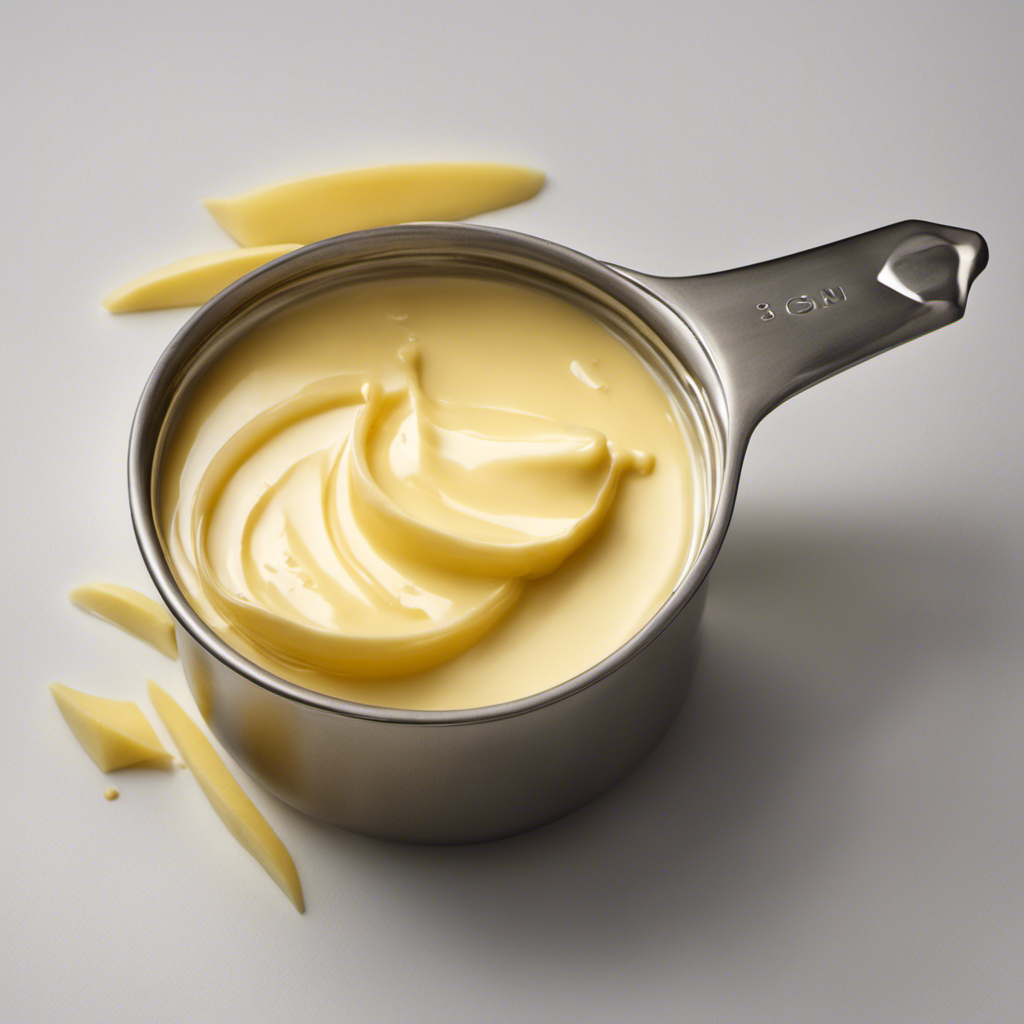
 Butter Tips and Tricks1 month ago
Butter Tips and Tricks1 month agoHow Many Tablespoons in 2/3 Cup of Butter?
-
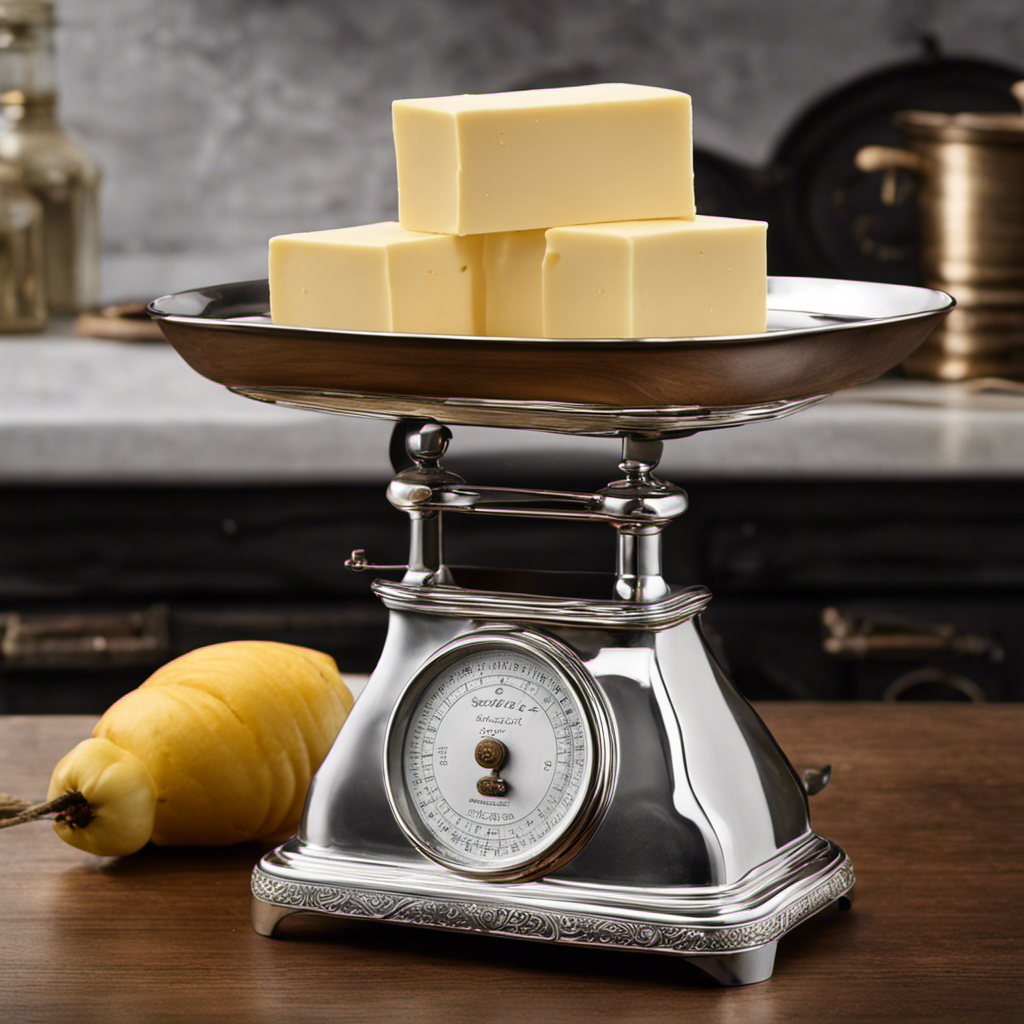
 Butter Tips and Tricks1 month ago
Butter Tips and Tricks1 month agoConverting 3/4 Cup of Butter to Sticks: How Many Sticks?
-
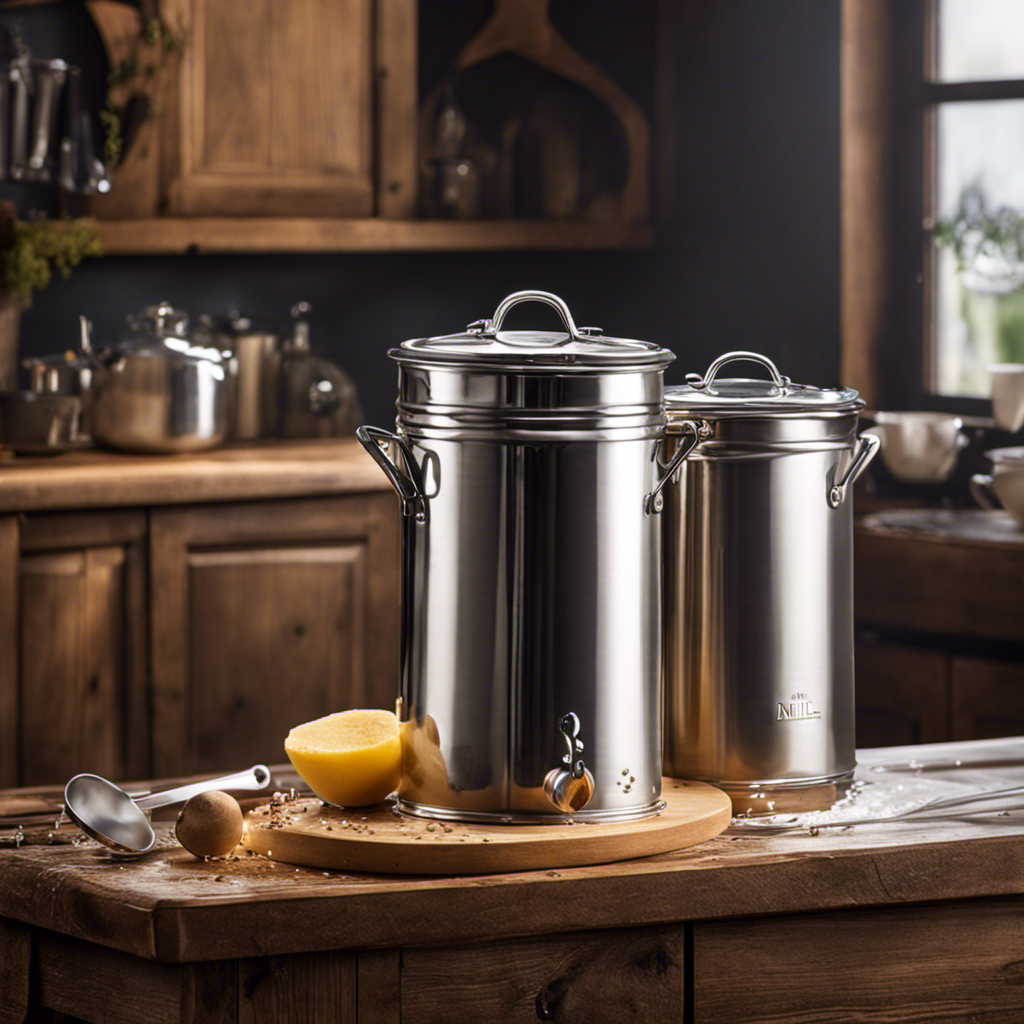
 Recipes & Culinary Uses3 months ago
Recipes & Culinary Uses3 months agoHomemade Butter Making at Home with Fresh Milk
-
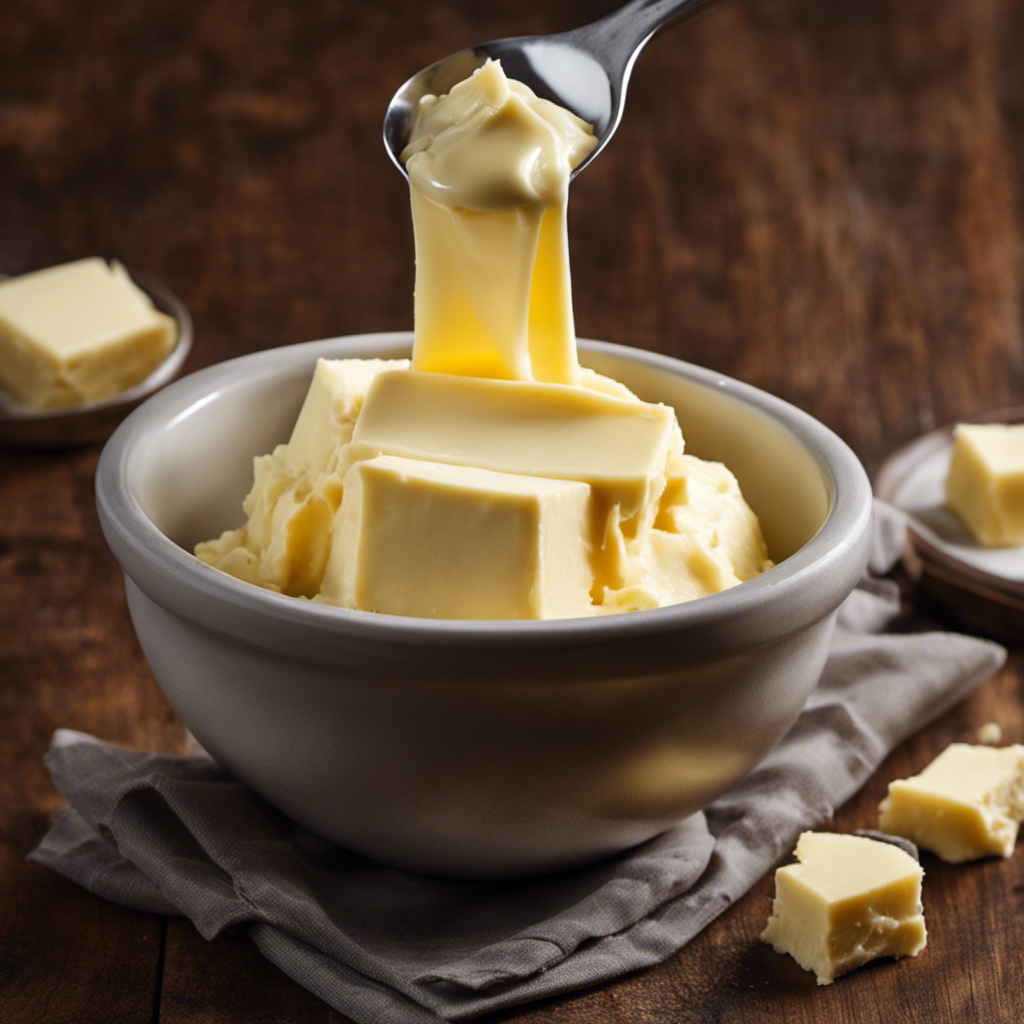
 Butter Tips and Tricks4 weeks ago
Butter Tips and Tricks4 weeks agoHow Many Tablespoons of Butter Are in 3/4 Cup?
-
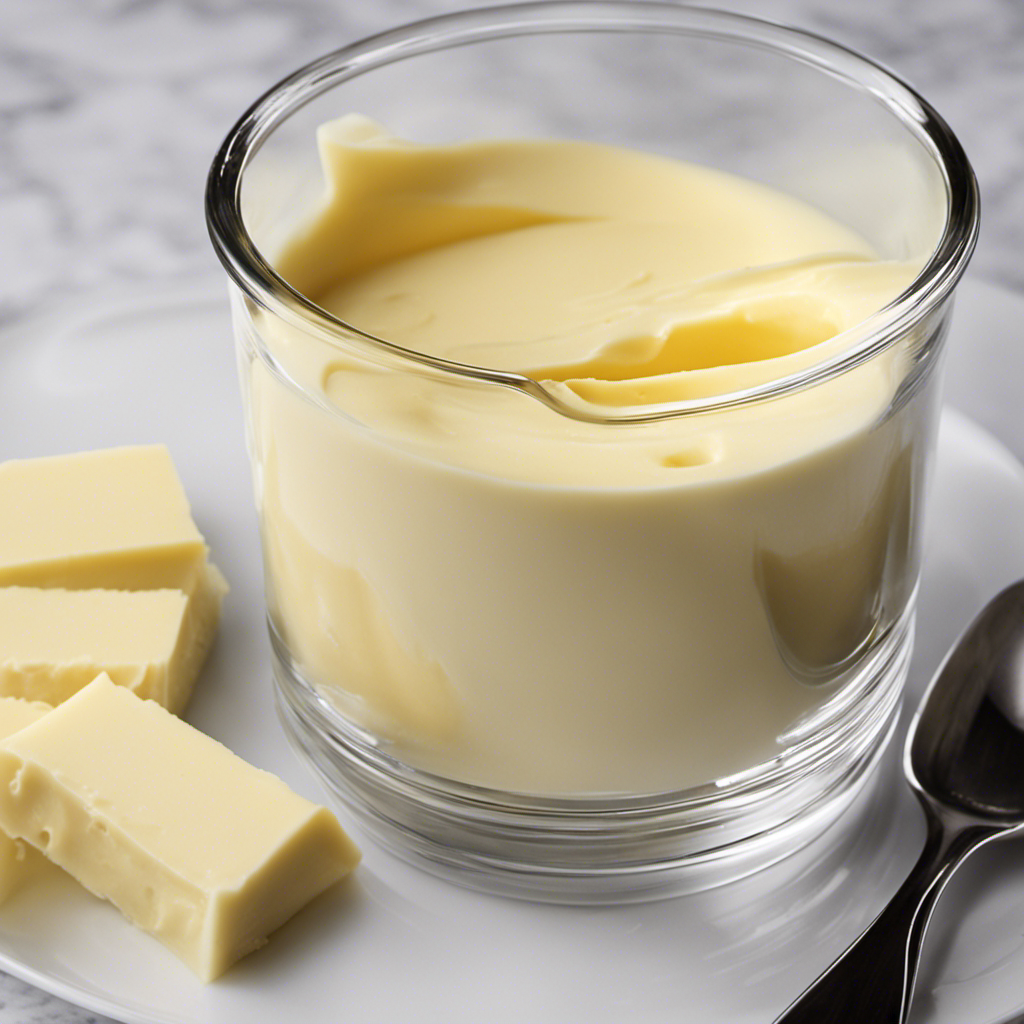
 Recipes & Culinary Uses3 months ago
Recipes & Culinary Uses3 months agoHow Many Tablespoons of Butter in 3/4 Cup: A Simple Guide
-
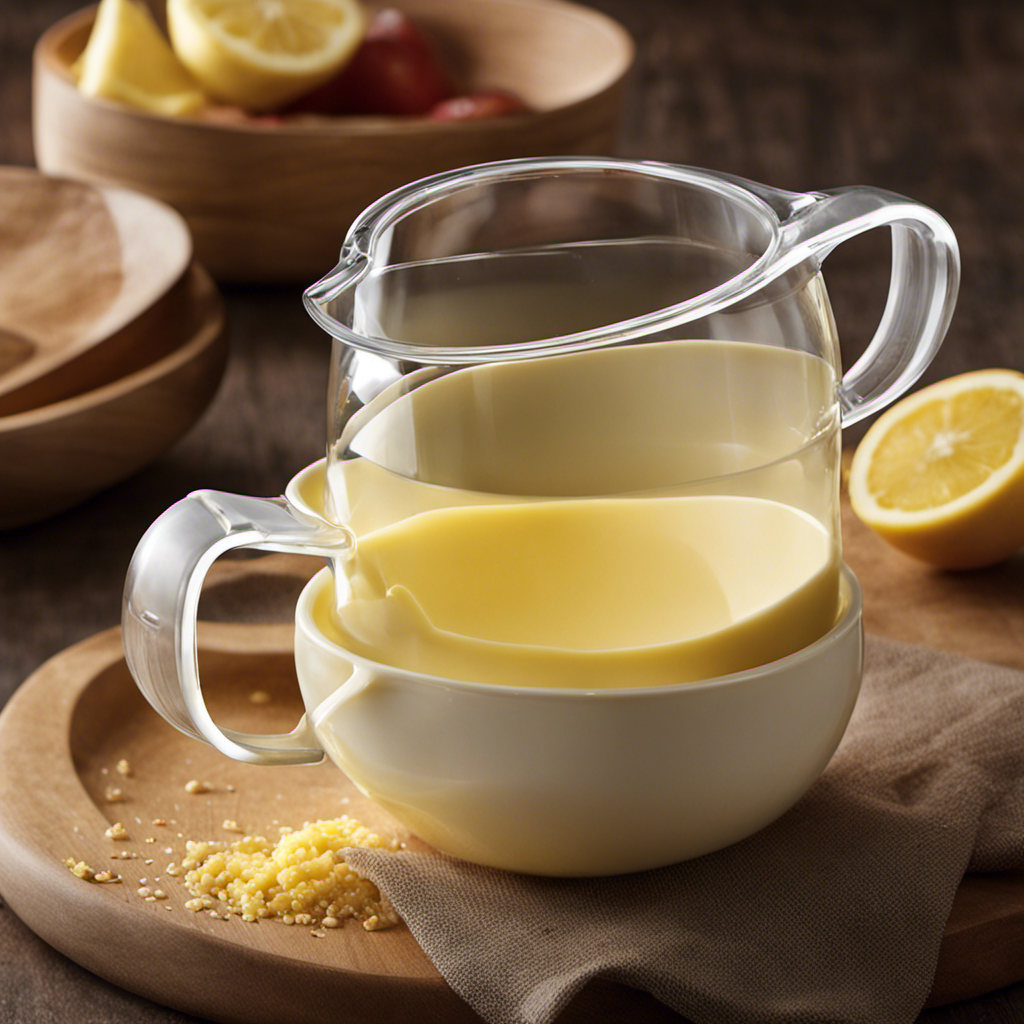
 Butter Tips and Tricks4 weeks ago
Butter Tips and Tricks4 weeks agoHow Many Tablespoons of Butter in 1/3 Cup: A Simple Guide
-

 Butter Tips and Tricks4 weeks ago
Butter Tips and Tricks4 weeks agoHow Many Tablespoons of Butter in 1/4 Cup: A Simple Guide
-

 Recipes & Culinary Uses3 months ago
Recipes & Culinary Uses3 months agoCreate Butter From Whole Milk in 7 Simple Steps









